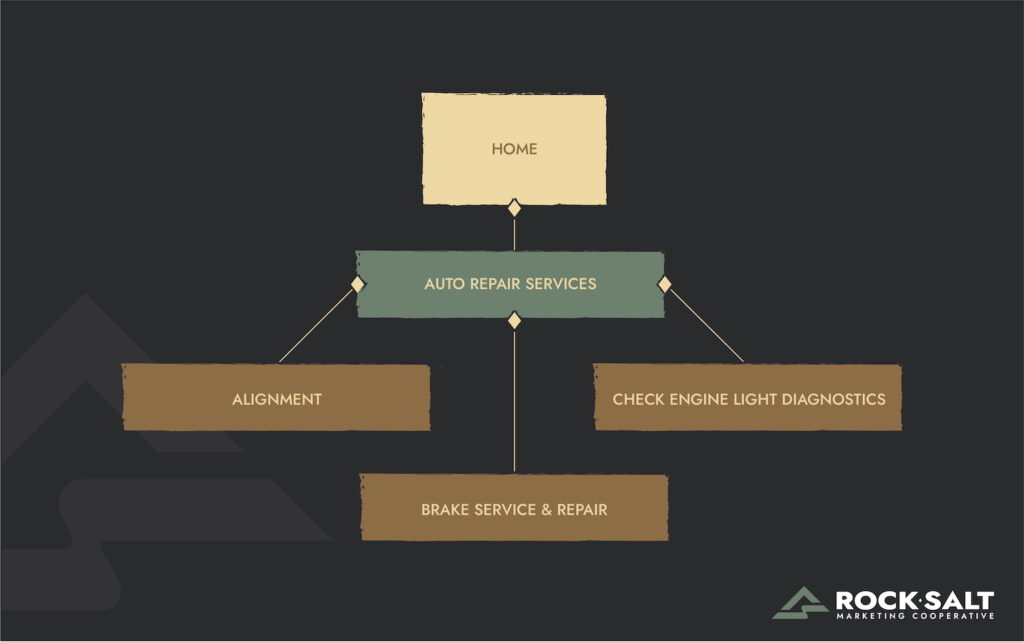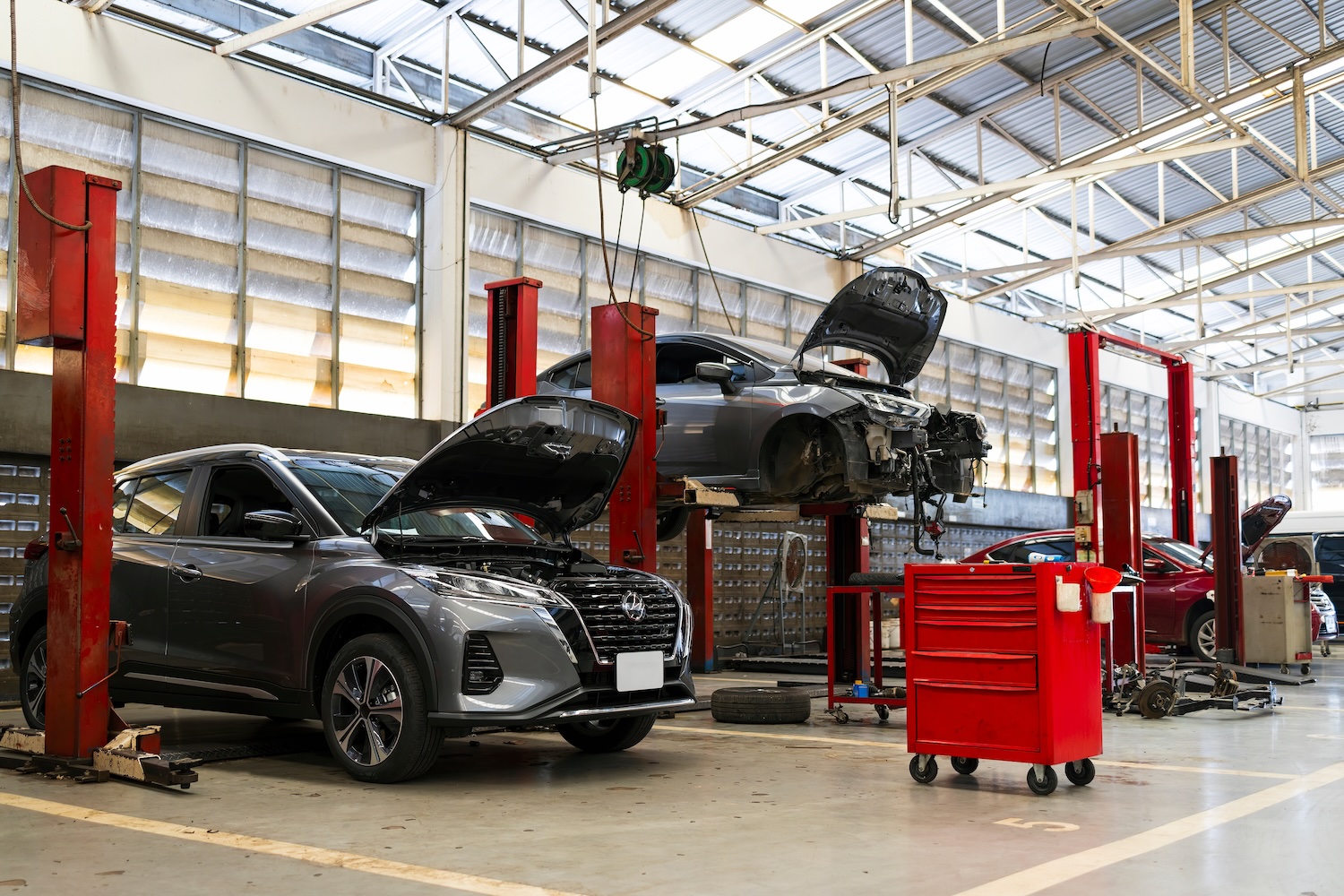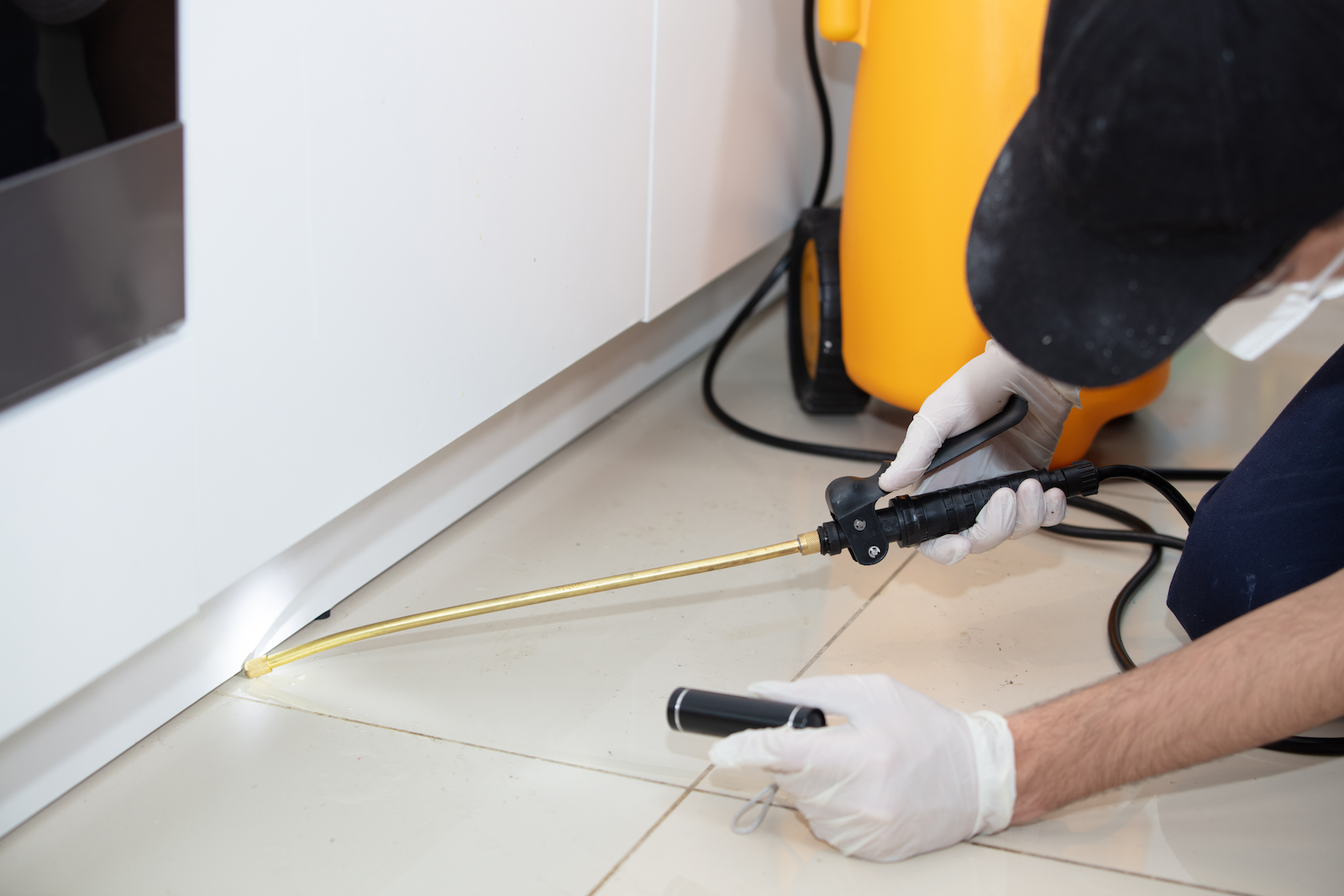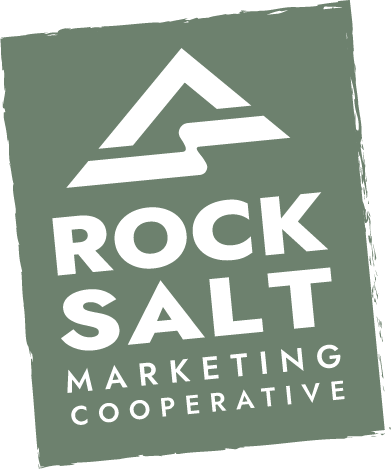The automotive industry is highly competitive, especially in the digital marketing space. Search engine optimization (SEO) is a powerful tool that helps automotive businesses improve their search rankings, attract more customers, and drive valuable traffic to their websites.
In this blog, we’ll explore 7 SEO strategies that can fuel your success and give your business a competitive edge. Keep reading to learn how to build an effective SEO campaign for your automotive business!
What is Automotive SEO?
Automotive SEO is a set of digital marketing strategies designed to enhance your website’s visibility on search engines like Google, Yahoo, and Bing. With the right SEO approach, your pages can rank higher in search results when potential customers look for services or products you offer. You’ll often be competing with hundreds of other automotive businesses, making it especially important to implement proven SEO strategies to increase your rankings and online traffic.
Why is SEO Important for the Automotive Industry?
Most online users find automotive businesses by searching online (usually on a mobile device) for nearby shops—often choosing the one with the best reviews. However, without a strong SEO strategy, your website may not appear in local search results, leading to missed traffic and potential leads. With the right optimization techniques, your automotive site can rank higher in search results, helping you outrank competitors and attract highly targeted traffic.
SEO can also help build reputability and trust, which is especially important for businesses in the automotive industry. According to AAA, 2 out of 3 drivers in the US don’t trust car repair shops, and 63% of drivers admit having a hard time trusting automotive businesses due to negative past experiences. No matter what type of automotive company you own, trust is essential to generating leads, maintaining customer loyalty, and building a positive reputation in the industry. Fortunately, a search-conscious website with positive reviews, high-quality, informative content, and an established online presence can help remove the negative stigma associated with automotive businesses and enforce trust and credibility. Maintaining a solid local online presence increases the likelihood of your business attracting potential customers and becoming known as an expert in the industry.
How to Perform Effective Automotive SEO: 7 Steps for Success
SEO for the automotive industry presents its own set of unique challenges. Automotive businesses, from dealerships to repair shops, compete for the same local and national keywords, making it difficult to earn the top spots in search results. Targeting the right keywords for automotive SEO is complex. Unlike businesses like lawn care services that optimize for just a few offerings, automotive companies must cater to countless searchers with diverse intents—ranging from specific vehicle components and repairs to unique issues tied to certain makes and models. Technical SEO can also be challenging for automotive sites. Large inventories, numerous location pages, high-resolution images, and vehicle comparison tools can slow down loading speeds, negatively impacting SEO.
Automotive SEO can be challenging, but with the right strategies, you can climb the search rankings. Here are 7 essential steps to build an effective automotive SEO strategy while tackling the unique challenges of the industry:
1. Perform Keyword Research
One of the building blocks of a solid automotive SEO strategy is keyword research. It involves finding and selecting keywords that your ideal audience uses when searching on Google, Bing, and other search engines. You’ll then target these search queries throughout your site, enhancing its online discoverability and meeting searchers’ intent.
Start your keyword research by listing words potential customers might use to find your business online. Then, use SEO tools like Semrush, Ahrefs, or Answer the Public to expand your list into long-tail queries—while also incorporating local keywords. Both are essential for the automotive industry:
Long-tail keywords are more specific terms from users searching for a product, solution, or service. Long-tail keywords are a low-hanging fruit SEO strategy that attracts users who are ready to call your shop or fill out a contact form—and they’re easier to rank for in search results. These queries generally have a lower search volume than broad terms, and can even provide quicker results. For example, here’s a list of long-tail keywords you can target if you own a car dealership:
- Affordable new cars with financing options
- Best electric vehicles under $30k
- Luxury cars with low down payments
- Used like new affordable Teslas
- Certified pre-owned Honda CRVs for sale
- What to say when calling a dealership
- Best used car to buy
Compared to broad terms like “Tesla,” “Hyundai,” or “Car dealership,” long-tail search queries are more targeted, and traffic generated from ranking for these terms is more likely to convert.
Local keywords are geo-specific search queries that searchers use to find an automotive business in a particular region. Targeting local keywords is an essential local SEO practice automotive businesses should utilize. These terms attract local searchers to your site, whether you have multiple service areas or just one. Here’s a list of localized keywords you might use if you own an auto repair shop:
- Auto repair [service area]
- Oil change [service area]
- [Service area] paintless dent repair
- Alignment [service area]
- Check engine light diagnostics [service area]
Localized keywords can include the state, county, or city of your company’s service areas. Focusing on geo-specific search phrases attracts targeted traffic that is highly relevant to your business and more likely to convert.
Use these tools to expand your search phrase list and ensure you meet your target market at every part of the buyer’s journey. After you’ve compiled an extensive list of search phrases, you’ll target these keywords in your page headers, site copy (blog posts, service pages, location pages), meta descriptions, and URLs, which is something I’ll explore later. Keyword research is the first step of automotive SEO as it informs your sitemap planning and structure.
Check out our keyword research guide to learn about the process in-depth.
2. Pay Attention to Your Website’s Hierarchy
To appear in the top search results, your website must be developed with online users and search engines in mind. Search engines constantly crawl the internet, visit and analyze web pages for content and relevance, and store them in their databases. The search engine then includes the indexed pages in future search results according to relevance, reliability, credibility, and user experience.
A well-structured automotive website allows viewers to navigate your site and find what they need intuitively. It also helps search engine bots crawl and index your pages quickly, increasing online traffic, engagement, and enhanced search results rankings.
Structure your website so that all core pages are easily accessible within a few clicks from the homepage. For example, if you own an auto repair shop, your website might include these core pages, all linking back to the homepage:
- Auto Repair Services
- Locations
- About Us
- Blog
- Contact
Include these core pages in your site’s top menu or main navigation, highlighting your primary services. Then, create drop-down menus listing the specific services for each category. For example, the Auto Repair Services page could be linked to a page about Alignment, Brake Service and Repair, Check Engine Light Diagnostics, and more. The pages related to alignment, brake repairs, and check engine lights would be a click away from the Auto Repair Services page and two clicks from the homepage:

Site architecture is typically established during the site build phase, and making significant changes later can be challenging when optimizing. It’s best to refine rather than overhaul an existing structure. If your current URLs and page paths are driving organic traffic and have valuable backlinks, it’s best to leave them as they are or use a 301 redirect to guide users to the same content under an updated, optimized URL.
Here are a few more insider tips for site structuring:
- Build a Sitemap & Submit it to Google: Use tools like PowerMapper, XML Sitemaps, or Yoast SEO to generate a sitemap. Then, log in to Google Search Console and submit your sitemap. Submitting your sitemap to Google helps the search engine index your pages and crawl your site more efficiently.
- Create User- and SEO-Friendly URLs: Keep your URLs short and precise, eliminating details like dates or special characters. Ensure they include targeted keywords showing users and search engines what the page is about. For example, if you’re writing an auto repair service page, your URL may look something like: https://www.automotivecompany.com/auto-repair-services/
Read our SEO web design and development guide to learn how to build a sleek, search-conscious website.
3. Map Your Keywords & Create High-Quality Content
Planning your site’s content with keyword mapping is a crucial step in automotive SEO. Keyword mapping involves assigning search queries to relevant pages that match user intent. This ensures you’re creating content that searchers are actually looking for rather than relying on assumptions. For example, if you’re targeting the term “Car dealership in Reno, NV,” add a Reno-specific location page to your content calendar. Or, if you’ve identified a search term like “how often should I change my oil,” schedule a blog post about oil changes. If you already have a published site, prioritize optimizing your existing pages.
As you keyword map, create a content calendar that organizes your pages with associated keywords. At Rock Salt, we use Google Spreadsheets to create content calendars, but you can use any tool you prefer. Here are 3 tips to keep in mind when making a content calendar:
- Start with your website’s core pages. Whether building a new website or optimizing an existing one for SEO, start by scheduling your core pages (e.g., home, services, locations served, about) in your content calendar. Core pages drive the most conversions since searchers landing on them are often ready to book an auto repair service or buy a car. Blog posts help generate traffic but don’t always convert immediately, so prioritize core pages first.
- Target informational keywords by writing high-quality blogs. Blog posts targeting automotive search terms with an informational intent (e.g., “how much does a car diagnostic cost”) boost traffic, build authority, and improve rankings. While they may not always attract local searchers, they help earn backlinks and strengthen your online presence, ultimately driving more conversions.
- Use secondary keywords to complement primary terms and improve automotive SEO results. When optimizing your content, incorporate both primary and secondary keywords. Primary keywords are the main terms each page aims to rank for, while secondary keywords add context and depth, and often share similar search intent. For example, a page with the primary search query “car won’t start in the cold” could include these secondary keywords: “why won’t my car start in the cold” and “car won’t start in cold weather.” Incorporating both primary and secondary keywords helps your pages rank for a wider range of relevant search queries without the need to create separate content for each variation, making your automotive SEO strategy more efficient.
When creating search-conscious content for your website, keep these things in mind:
- Target keywords naturally throughout content: When creating content for your blog or website, naturally include targeted keywords throughout the page. Target the primary keyword throughout the body content and in the title tag, meta description, H1 tag, and URL slug. Secondary search terms can be targeted throughout the body content and relevant subheadings. Avoid keyword stuffing, as search engines may flag your pages as spam. Instead, focus on providing valuable automotive-related content that answers searchers’ questions and encourages engagement.
- Create genuinely helpful, unique, and useful content for searchers: Search engines reward well-optimized, helpful content by ranking it higher in search results. Focus on creating relevant automotive content that thoroughly answers users’ questions, provides valuable insights, and naturally encourages users to engage with your products or services. Enhance your content with images, how-to videos (more on this later), FAQ sections, and credible citations from industry experts.
- Enhance the readability of your content for users and search engines: Use clear, concise language and break up text with short paragraphs, bullet points, and subheadings to improve readability. Formatting elements like bold text, numbered lists, and descriptive headings make it easier for users to find the information they need. Additionally, optimizing for mobile ensures a smooth reading experience across all devices, boosting engagement and search rankings.
Insider Tip for Automotive SEO: Create Educational or Promotional Video Content
Video is a powerful SEO tool in the automotive industry, and the numbers prove it. According to Google, 65% of first-time auto repair customers discovered the shop through video. For car dealerships, video is just as crucial—over 60% of car shoppers who used video in their research visited a dealership or website afterward. Additionally, more than 40% of auto shoppers said video helped them discover vehicles they hadn’t considered before.
Incorporating a mix of educational and promotional videos on your website can boost engagement, strengthen your online reputation, and improve search rankings. Many SEO best practices also apply to video content—use relevant keywords in the title, description, and tags. Even voicing your primary keyword throughout the video and adding a transcript (especially for YouTube) can enhance visibility and conversions. According to Backlinko founder Brian Dean, YouTube comprehends about 90% of spoken words in videos, so naturally integrating keywords can make a difference. To maximize impact, repurpose videos by embedding them in blog posts or creating new blog content based on key takeaways from your videos.
4. Initiate Link-Building Campaigns
Inbound links, or backlinks, are links from other websites that lead to your site and can significantly boost your search engine rankings—if they’re high-quality and relevant. Think of them as a vote of confidence, signaling to search engines that your automotive content is valuable, authoritative, and trustworthy.
Focus on acquiring backlinks from reliable sources, such as the following:
- Online magazines in the automotive industry (e.g., MotorTrend, Car and Driver, Stance Auto)
- Regional business directories (Yelp, Yellow Pages, MerchantCircle)
- Authoritative websites and articles targeting car buyers or enthusiasts
- Vendors and suppliers
- Non-competing businesses in your industry
Building backlinks is an essential SEO practice for the automotive industry that increases your reputation and authority as a leader in your field. The best way to earn backlinks is by creating high-quality, valuable content that others want to reference. Industry professionals often link to content with visual assets, original research, or in-depth guides. By producing informative, relevant content that answers common questions, you naturally increase your chances of gaining links.
Another way to earn backlinks is to contact automotive industry experts and teams. Though time-consuming, this can secure links from trusted sites. You can use Semrush’s Link Building Tool, or other similar resources, to find prospects by analyzing competitor backlinks and target keywords.
5. Improve Page Speed & User Experience on Your Site
Did you know that Google considers page speed as a ranking factor in its algorithm? Faster page load times improve user experience and can boost search rankings. Use tools like Google PageSpeed Insights, Pingdom, and YSlow to analyze your automotive site’s speed and find areas for improvement.
Improving your site page speed and user experience is a technical SEO practice that’s essential for those in the automotive industry. Here are 4 ways you can improve your site loading speed to ensure a positive viewer experience and earn favor with search engines:
- Compress Images: Images enhance your automotive website but can slow load times due to large file sizes. Use tools like Imagify, ImageOptim, Kraken, or JPEGmini to reduce image size without quality loss. Though it takes time, compression improves site speed and user experience.
- Use a Content Delivery Network (CDN): A CDN stores copies of your site’s content on multiple servers worldwide, reducing load times by delivering data from the nearest server. Without a CDN, all user requests go to a single server, slowing performance—especially for distant users. Though costly, a CDN significantly boosts speed and efficiency.
- Reduce Plugin Usage: Plugins boost functionality but can slow your site if too many are installed. Regularly audit and remove unnecessary plugins, and test performance to identify slow ones. Avoid plugins with excessive scripts, styles, or database queries, and keep only essential, up-to-date ones.
- Enable Website Caching: Caching stores site data, allowing browsers to load pages faster without repeatedly fetching resources from the server. This reduces strain on your server and improves speed, especially during high traffic. Using website caching depends on the platform on which your site is developed. For example, WordPress sites can use plugins like WP Rocket, WP Fastest Cache, or WP Super Cache.
6. Improve Your Google Business Profile
Your Google Business Profile (GBP) is often the first thing potential customers see, especially as most searchers look for local automotive businesses. A GBP displays your URL, location, contact details, and images, while also showcasing customer reviews. Since trust is crucial in the automotive industry, optimizing your GBP is essential.
Here are a few pro tips to make your automotive GBP SEO-friendly:
- Ensure your GBP is accurate and up-to-date. Include your current contact information, hours of operation, business name, and address. Ensure this information is consistent across every online local business citation to prevent confusion and improve your reputation online.
- Regularly update your profile with photos, videos, and new posts. Share images of cars for sale, your team, your auto repair shop, and videos of employees at work or satisfied customers. If you own a repair shop, consider posting before-and-after shots, such as an engine after debris and rust removal. Additionally, post snippets of a recently published blog, encouraging viewers to read the article on your site.
- Target local keywords in your automotive business name and GBP content. This boosts your SEO efforts and helps nearby searchers find your services or vehicles.
- Respond to reviews, both negative and positive. Be genuine when responding to reviews. Thank customers for their feedback, and if the reviews are negative, explain how you plan to improve and address their concerns. Use a professional tone to maintain a positive reputation and authentic online presence.
By applying these tips and delivering excellent service, you’ll naturally encourage customers to leave reviews on your GBP, boosting visibility, credibility, and engagement.
7. Focus on Performance & Fine-Tune Your SEO Strategy
How can you determine whether your automotive SEO strategies are working? Track leads and monitor your online performance.
Here are 3 tools you can use to ensure your SEO efforts are paying off:
- Google Analytics offers free tools to track site traffic, analyze user behavior, and identify high-performing keywords. It helps answer questions like, “How long do users stay on a page?” and “What is my site’s average bounce rate?” You can also integrate it with Google Ads to monitor your PPC efforts.
- Google Search Console offers tools to optimize content through search analytics. It helps monitor traffic, understand how Google reads your pages, identify issues, and improve rankings.
- CallRail tracks phone and contact form interactions, helping you trace leads to specific keywords and traffic sources. It provides insights into your automotive SEO performance, allowing you to refine strategies and attract more qualified leads.
Utilizing these tools helps you fine-tune your SEO strategy and effectively reach your target market online.
Partner With Automotive SEO Experts to Attract Qualified Leads
Search engine optimization is a lengthy process that can take up to 6–12 months to show results. Optimizing your site, performing keyword research, improving technical performance, and constantly making pivots to enhance your SEO strategy can quickly become overwhelming. If you’re in the automotive industry, hiring an SEO expert to boost your online traffic and drive an increase in qualified leads can be significantly beneficial.
Our Utah-based digital marketing agency specializes in tailored automotive SEO services. Rock Salt’s team delivers high-yielding SEO services for small and multi-location automotive businesses, including keyword research, content creation and optimization, GBP management, link building, and more. We also prioritize in-depth reporting and ongoing face-to-face meetings, ensuring you and your team are a part of the process 100% of the time. Rock Salt’s automotive SEO professionals aim to improve your site’s visibility and search results rankings. Contact our agency to work with Utah’s top-rated SEO team and see how our expertise and proven strategies can help you attract more leads online.




